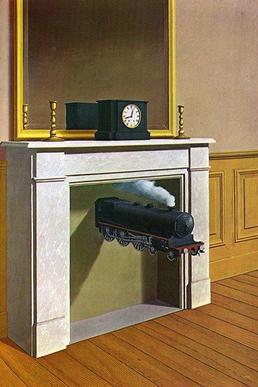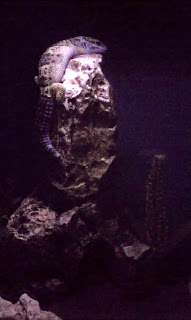
My friend and I discovered coconut nog this year. Yes, dairy-free eggnog! My excitement over this is probably completely disproportionate to how good it actually is, but I miss eggnog.

I'm sure you are aware, but my immediate family is just about as nerdy as you can get. My brother decided to nerdify the Christmas tree as well. So we had the TARDIS from Doctor Who as the topper, and Star Wars snowflakes as ornaments. Next year I'm planning on getting him some more nerdy ornaments for his collection.

My cousin is teaching in Thailand for the next year, and she's incredibly homesick. So a bunch of us crammed onto my aunt's stairs to say hello to Emily. You'd think that with so many people, one person wouldn't be missed, but we always miss those who can't be with us on Christmas.

We had two little miracles born into the family this fall. I'm holding Zackary, who gave us quite the scare by coming two months early. My aunt weighted him on her kitchen scale on Christmas morning, and he had finally hit eight pounds exactly. My other cousin's baby wasn't able to join us as he was just diagnosed with Cardiomyopathy and had only been released from the hospital a few days before Christmas. Instead of exchanging gifts, my extended family all made donations to the Children's Cardiomyopathy Foundation on Ryaln's behalf. (Yes, I did include the link there so you can donate as well if you feel so inclined. In fact, I encourage you to keep the Spirit of the Season past the New Year and find a charity to support throughout the year.)

As part of our Christmas tradition, we pass around a fiber optic poinsettia to be displayed in the recipient's home until the next Christmas. On the tenth anniversary of the poinsettia, my cousin Tim handed it off to my brother Michael. As my brother and sister just moved in together, Tim got double the laughs--my sister had it five years ago.

Just in case you were worried that I didn't treat myself to anything, I had fun putting together this "Leopard Gecko Palace" for Harper. I've actually been working on it for about six months--growing the plants and finding the terrarium decor that I wanted. I'm happy to report that Harper LOVES his new digs. It used to be that he'd fight me every time I'd try to put him back in his tank, and now he tries to crawl back in whenever I take him out.
Last year was a...difficult year for me, and this year has been filled with trials for a lot of people I hold dear. My family has gone though some incredible challenges, but we are all making the best of our situation. The worry and heartache have made us express our love and emotions in a way we've never had to before, and we find ourselves relying on each other a lot more. A good friend of mine was in critical condition after a hit-and-run driver, and I often found myself praying for the well-being of many friends serving in the military or living in volatile places overseas. Far too many friends and family members have been too close to tragedy for comfort--including friends attending the Boston Marathon, others who work at the Navy Yard, and still others in the path of hurricanes, tornadoes, floods and tsunamis. In many ways, 2013 was an anxiety-filled year, but my family and friends have been lucky. And to the many individuals who have not been so lucky this year, I grieve with you.
Someone at my hometown church asked me how my year was, and I told him it couldn't be better. And reflecting back on that answer, I have to say my response was totally sincere. My life is incredibly fulfilling, and I feel the love and support of a lot of people every single day. I might complain about school wearing me down and work stressing me out, but I love what I do, which far outweighs all of the negatives. I'm probably happier now than I have been at any other point in my life. And don't think I'm unaware of just how special that is. I am grateful every day for all of my many blessings.





















